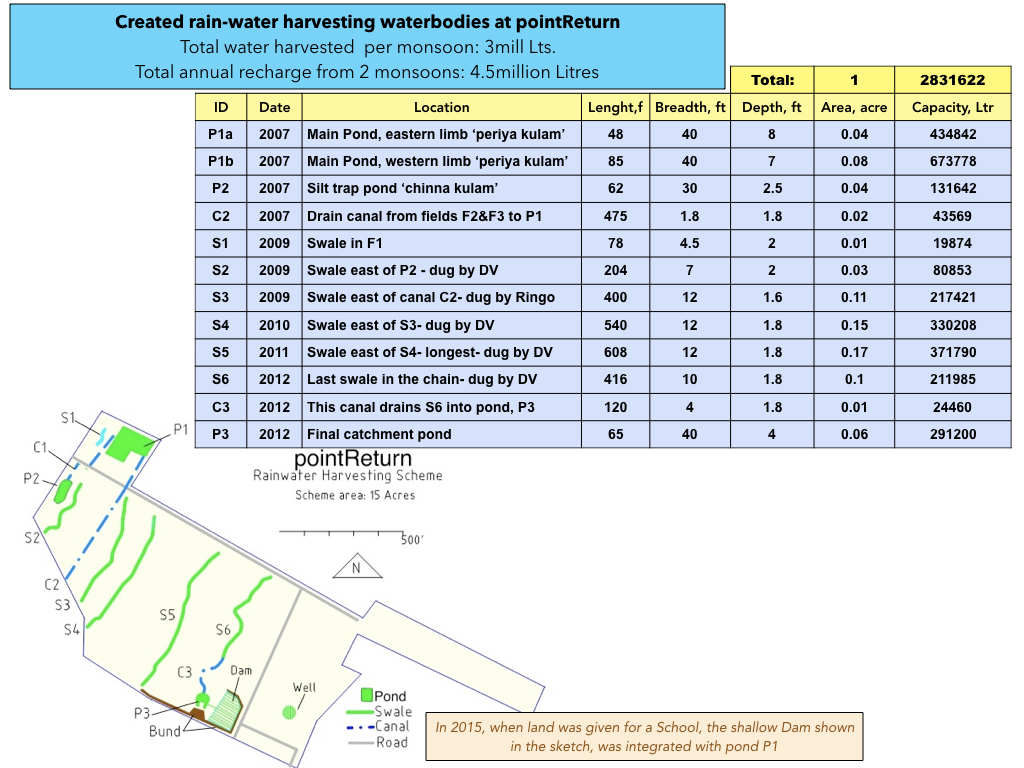Following is a detailed list of water bodies at pointReturn. A quick account of how they came about is below the table.

In 2006, when first visited, the site was bald, hard, dry and without a single source of water. The natural slope of the land, lack of any attempt to harvest rain water and a general state of dereliction had resulted in heavy annual run-off of water.
A series of early articles narrate the story in detail.
A water diviner surveyed the land in Oct,2006. A machine came over and drilled a borewell in Feb,2007 and in Jun,2007, a windpump was erected.
The struggles of the windpump with poor recharge of borewell prioritised this need: large-scale water harvesting is crucial for restoration of the land. Thus in Nov,2007the main pondand a silt trap pond [‘Chinnakulam’] were dug.
The above steps led to considerable improvement of supply from the windpump, though the suction pipe today has lengthened from the original 60′ to 180′, added to in three stages.
A pond centralises water collection. Distributing it all over a 15 acre area calls for pipelines, labour and energy. A better and more passive way would be by swales, which are contour trenches created everywhere. The water they catch hydrate the soil making irrigation nearly unnecessary. Here is a primer on swales. As I write, in 2011 there are six swales and work of creating water harvesting bodies is almost complete.
With each passing day, amount of water harvested and charged into the earth increases. While water in a stream takes but few minutes to travel a mile,it has been found water underground can take up to 10 years to do the same. On this fact resides the claim of increasing reserves of water under the pointReturn project site.From this informative page:”Velocities of ground-water flow generally are low and are orders of magnitude less than velocities of streamflow…A velocity of 1 foot per day or greater is a high rate of movement for ground water, and ground-water velocities can be as low as 1 foot per year or 1 foot per decade. In contrast, velocities of streamflow generally are measured in feet per second.”